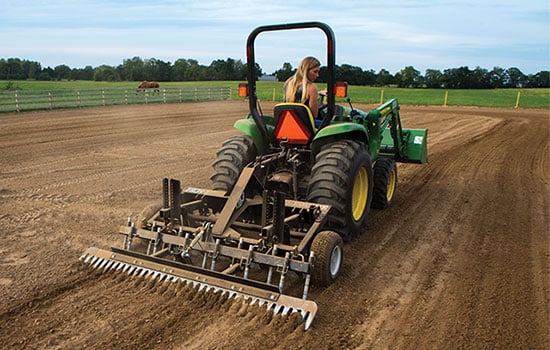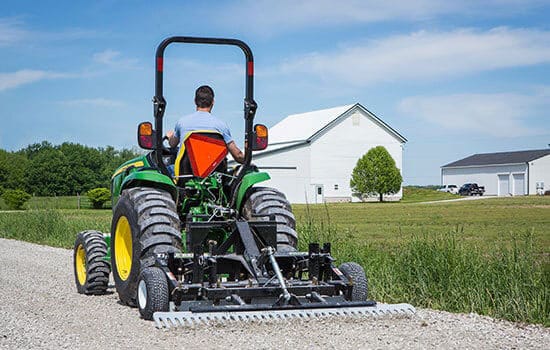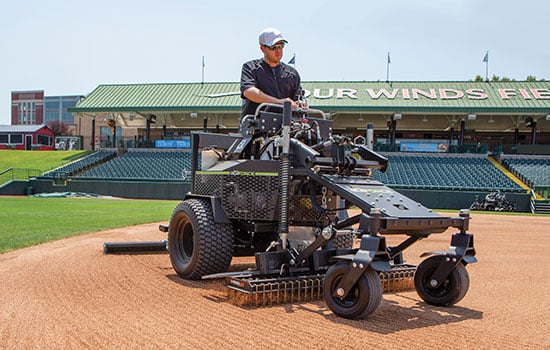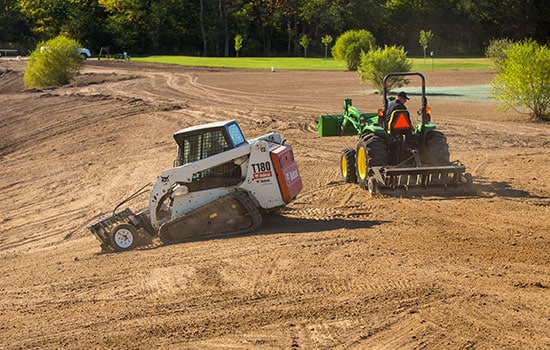Pasture Management: ABI Shredder Bar – ABI Dirt
ABI Products Shown In This Video
Transcript
Hi everyone, Matt Metzker here with ABI Attachments. Welcome back to the ABI Dirt first episode here in 2021. I hope you all had a great and restful holiday season. I know that come every January, we’re all thinking about getting healthy after that holiday season. But here at ABI, we’re thinking about getting your soil and pasture healthy.
Today here on the ABI Dirt, we’re going to take a closer look at the primary component on our classic spreader that is responsible for taking the manure that you’re pulling out of your stalls and breaking it down so that you can get the maximum amount of benefit out of that manure and get your pasture as healthy as possible. Let’s go take a closer look.
Here we are at our classic spreader. Now you can see we left it inside of the crate for you today because I wanted you to get a good look at what it looks like coming right off the truck. You can see that we’ve got a complete garage built around this unit, because remember, we ship directly from our factory to your driveway, which means you’ll most likely have some kind of semi truck with lift gate dropping this down into your driveway.
This is what it looks like all bound up. We like to joke, we don’t just get you a manure spreader, we also get you a nice bonfire. This is our 25 cubic foot ground drive unit. We range in sizes on manure spreaders, anything from a 25 cubic foot up to a 185 cubic foot. This is a ground drive model. We also have PTO models available.
You can also see that when we ship it, in order to make it very easy and affordable to get to your location, we take off the C channel tongue that’s up front of the unit. That is sitting here in the bed of the unit, very simple, two bolts on each side to put together, fits inside the frame C channel for durability.
Now, today though, we’re taking a look specifically at the shredder bar inside of this unit. You can see that we have got an inline shredder that comes standard on our manure spreaders. There’s a lot of manure spreader manufacturers that make this shredder bar optional, but because we see manure as brown gold, we need it to be shredded. Remember, it’s not just poop to get rid of out of your stall. Manure is valuable nutrients for anything you want growing in your pasture, but in order to leverage those nutrients and really get them into your soil, you’ve got to shred it first, which is why we’ve got a shredder bar, comes standard on all of our manure spreaders.
You can see they are bolt onto the main rotating shaft here with different knives that come out fully welded in. Those shafts pieces, those nice bars that run across that shredder bar, are replaceable should you ever need to get them replaced. A couple of bolts swaps those out, new ones goes in. That shredder bar is chain linked up to the ground drive system or PTO system so that it is easy to turn on and off, engage and disengage.
Let’s talk a bit about maximizing that nutrient entrance into the soil. There are a couple of factors here. If you don’t shred the manure before you spread it on the pasture, what you’re going to have is the actual clumps and clods of manure when they hit the ground. A couple of reasons why that’s so dangerous. First of all, wherever that clod lands, you can’t get any sunlight to the soil underneath and whatever you’ve got there is probably going to die out. If that lands on some healthy turf, some healthy pasture grass, you’re going to kill the what’s underneath. But if you break those clods up, well now you’ve got a bunch of broken small pieces that can fit in and between those blades of grass so that the manure can get down to the soil.
Another primary reason why you want to shred this manure before you spread it is for flies. If you’ve got big chunks of manure out across your pasture, it just leaves open space where flies can come in and plant the larva, and then you’ve got more pests out there. If you break everything up, heat of the sun can get in, it can decompose that manure faster, less flies, more nutrients, straight into your soil.
Final note on this spreader bar, before we close out today, is speed. We get a lot of questions. Once these manure spreaders actually hit properties, what’s the appropriate speed to run them. There’s a reason we put a varying speed on that web drive. When we say speed, you’ve got a forced speed control on how quickly that web slats, that web chain moves the manure to the rear of the spreader. What we found is that if you’ve got your web drive, your web chain, moving that manure in the second speed position on our ground drive units, and you’re running about five to seven miles an hour, it means you’ve got a significant amount of RPM here on the shredder and widespread paddle, and that manure is moving at a nice slow rate so the shredders have time to get a nice, good shred.
Now, if you’re just in our hurry that day and you want to kick it up to speed four, no problem. That maneuver’s going to move through. But for that ideal shred, give yourself some time, keep it in that second or third speed on that web drive chain to allow those clumps and clods of manure to really get beat up so you can maximize the nutrients to your pasture.
That’s all I’ve got today, everyone. Remember we have got a full team of factory reps here available to you to answer any questions you may have about our classic spreaders. Remember too, that we have got a variety of sizes, anything from a 25 cubic foot, all the way up to a 185, and ground driven up through PTO models as well. Any questions, give us a call, take a look at the links in the description below for more information, but until next time, take care.



